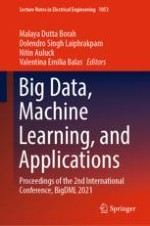2024 | OriginalPaper | Buchkapitel
A Simple and Effective Method for Segmenting Lung Regions from CT Scan Images Using K-Means
verfasst von : Yumnam Kirani Singh
Erschienen in: Big Data, Machine Learning, and Applications
Verlag: Springer Nature Singapore
Aktivieren Sie unsere intelligente Suche, um passende Fachinhalte oder Patente zu finden.
Wählen Sie Textabschnitte aus um mit Künstlicher Intelligenz passenden Patente zu finden. powered by
Markieren Sie Textabschnitte, um KI-gestützt weitere passende Inhalte zu finden. powered by
